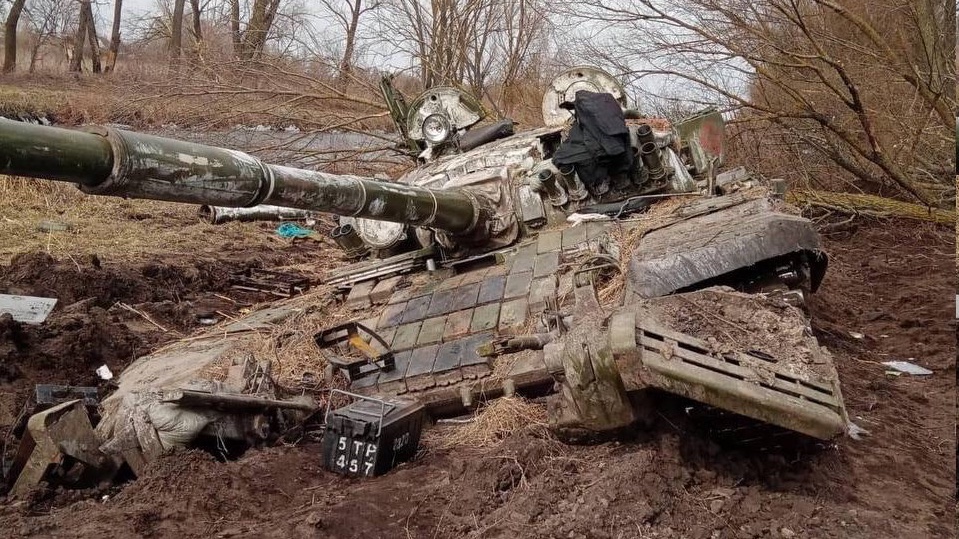
We have entered the 4th week since of the Russian invasion of #Ukraine. Today I examine why the west of Ukraine matters for Ukraine and Russia. 1/23 

2/23 As always, a shout out to those reporting on the Russian invasion. This includes @KofmanMichael @maxseddon @IAPonomarenko @RALee85 @shashj @DanLamothe @ikhurshudyan @IanPannell @ChristopherJM @KyivPost among others. Please follow them.
3/23 Back on 1 March, I described how the Ukrainian military high command – among their many other priorities - will be keeping an eye on its western border regions. smh.com.au/world/europe/t…
4/23 In the last week, the Russians fired long range missiles from aircraft to attack targets in and around the western cities of Lutsk, Lviv and Ivano-Frankivsk. edition.cnn.com/2022/03/13/eur…
5/23 The Russian strikes on these western cities demonstrate that the Russians understand why the west matters to both the Ukrainians and for their own military campaign.
6/23 First, western Ukraine is key to the delivery of western aid & influx of foreign volunteers. Ukraine has western land borders with Poland, Slovakia, Hungary, Romania and Moldova. There are multiple land crossing points for this purpose. (Image - Britannica.com) 

7/23 The western parts of Ukraine are also the locations of most refugee camps, and are thus an important locus of non-government agency support and the outflow of distressed Ukrainians seeking shelter beyond their country’s borders.
8/23 Western Ukraine is a strategic bastion for Ukraine’s military. It is a place where it can reconstitute military forces and train new ones out of the immediate heat of battle, and beyond the reach of most (but not all) Russian strike systems.
9/23 Finally, it is the most likely place from which any future insurgency might be based. There are multiple scenarios for this, explored in this @CSIS study. It might also include support bases as far west as the Carpathian Mountains.
csis.org/analysis/scena…
csis.org/analysis/scena…
10/23 Eventually the Russians might seek to interfere with these western supply lines in a more substantial way than the limited attacks we have observed so far. What are their options for doing so?
11/23 Option 1 is the Russians continuing a low-level campaign of ‘trickle bombing’ different sites in the west. They might launch missiles every few days at key military targets in the west, but this would largely be a nuisance more than a real threat.
12/23 And as we saw from the western reactions after last week’s attacks in the west, this approach is unlikely to halt the in-flow of aid and western volunteers. Other than limited psychological impacts, it is militarily limited in outcomes.
13/23 Option 2 is the Russians attempting a more robust air campaign against key military targets and supply lines in the west. The Russian Air Force, which is now undertaking around 200 sorties per day, still has significant underutilised capacity.
14/23 As this report notes, it has an inventory of hundreds of multirole aircraft and bombers with which it might undertake such missions. Not all might be described as leading edge, and would be vulnerable to anti-aircraft systems. static.rusi.org/russian_and_ch… 

15/23 And given the observed limitations on the Russians conducting large scale air operations so far, this is a low probability option.
16/23 Option 3 is the Russians using Spetznaz troops and other intelligence organisations in a campaign of sabotage at key weapons, logistics supply and trans-shipment bases in western Ukraine.
17/23 Such an approach might also be expanded into eastern European locations where western aid is stockpiled before it is shipped into Ukraine. The Russians have done this before, in the Czech Republic and Bulgaria. euractiv.com/section/politi…
18/23 Countries such as Poland are already preparing for such acts of sabotage by the Russians. abc.net.au/news/2022-03-0…
19/23 A 4th option for the Russians might be a ground operation in the west of Ukraine. This would require support from Belarus. Although whether Belarus would provide ground troops for such a campaign is doubtful. atlanticcouncil.org/blogs/belarusa…
20/23 Opening up another large axis of advance on the ground would over tax an already stretched Russian force in Ukraine. With over half of all its regular ground combat forces committed to their invasion, the Russians are unlikely to be able to undertake such a mission.
21/23 Therefore, the most probable course of action for the Russians, should they wish to focus more on the western regions of Ukraine, is a campaign of sabotage there and potentially in countries such as Poland.
22/23 Noting this, and given all the other demands on their forces, western Ukraine will likely remain an ‘economy of force’ mission for the Ukrainians. They will continue to commit the minimum forces required to deter Russian attacks in the west.
23/23 The west is a key part of Ukraine’s defensive strategy. It is vital for the flow of aid, and a bastion for their military. While the Russians appreciate the importance of the west, they currently have limited capacity for major attacks there. End. (Image - @IAPonomarenko) 

• • •
Missing some Tweet in this thread? You can try to
force a refresh









